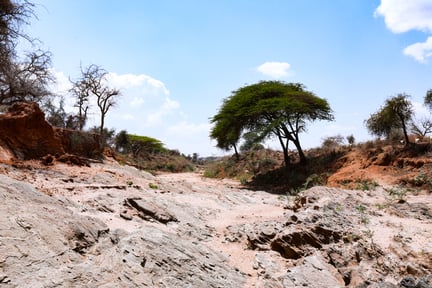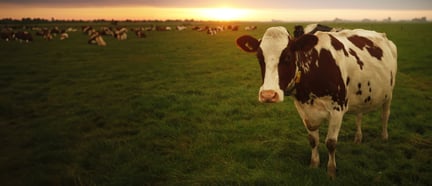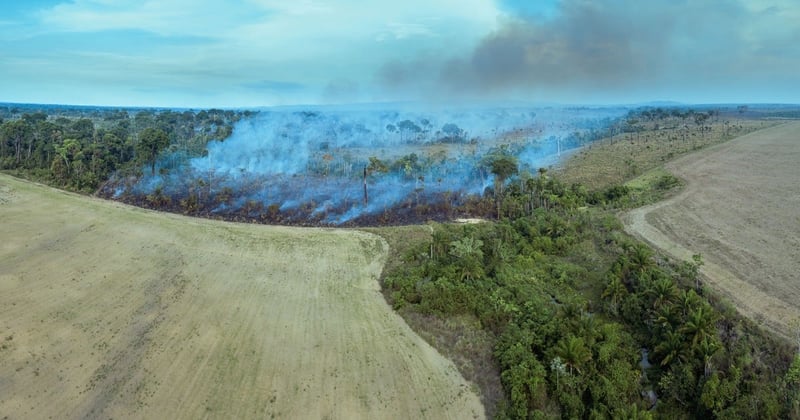
Explore our reports on factory farming and discover why governments need to act to protect our climate, wildlife habitats and farmed animals.
Governments need to uphold the commitments made in the Emirates Declaration to reduce factory farming emissions – protecting our climate and wildlife habitats, and saving billions of farmed animals from a life of suffering.
In November 2023, 160 countries agreed to the Emirates Declaration on Sustainable Agriculture, a groundbreaking initiative from COP28 that focused on changing agriculture and food systems to solve climate change. They pledged to put forward ambitious climate targets and goals – but little progress has been made.
As COP29, we urged them to make good on their commitment and act to end factory farming.
The devastating impacts of factory farming
With the biggest meat and dairy companies’ climate impact outweighing that of several developed nations, there’s no bigger threat to the future of our planet than the expansion of factory farming.
Despite this, factory farming is almost always overlooked as the climate culprit within the agriculture sector. Yet it’s factory farming that rips down forests to plant crops for animal feed – releasing carbon into the atmosphere. And it’s factory farming that devastates wildlife habitats, displaces local communities and profits from the cruel treatment of billions of farmed animals each year.
Impacts on the environment
Factory farming contributes at least 11% of the global greenhouse gases fuelling climate change.
Fossil fuels are used to produce fertilisers for factory-farmed animal feed. And when applied to fields, these fertilisers release harmful nitrous oxide greenhouse gases into the atmosphere. Overall, greenhouse gases from factory farm pig and meat chicken feed production and processing are equivalent to keeping 104 million cars on the road for a year.
And this footprint is set to grow. Demand for meat is rising fast, paving the way for the further expansion of factory farming. Back in 1970, global beef production was roughly the same as that of chicken and pork combined. With the growth in factory farming, the most intensively farmed species – chicken and pork – are expected to be produced at levels triple that of beef by 2050.
Impacts on factory-farmed animals
Not only does a greater demand for meat mean a greater climate impact, but it means billions more farmed animals condemned to lives of suffering.
Right now, every year more than 80 billion animals are farmed, most condemned to factory farms where their lives are brief and full of suffering.
On factory farms, animals are squashed together, often kept in cages and painfully mutilated. Farmed chickens exist squashed against tens of thousands of other chickens, with no room to flap their wings or perch like they would naturally.
A mother pig lives her life in a cage, unable to turn around, often biting the steel bars around her in frustration, causing injuries. Her piglets are stripped from her as early as 21 days old, their tails and teeth are cut and males are castrated.
To cope with cruel conditions and prevent them from getting sick, animals are dosed daily with antibiotics in their feed or water. That’s a risky practice, creating the ideal environment for superbugs to emerge and transfer to humans via the food chain or our environment.
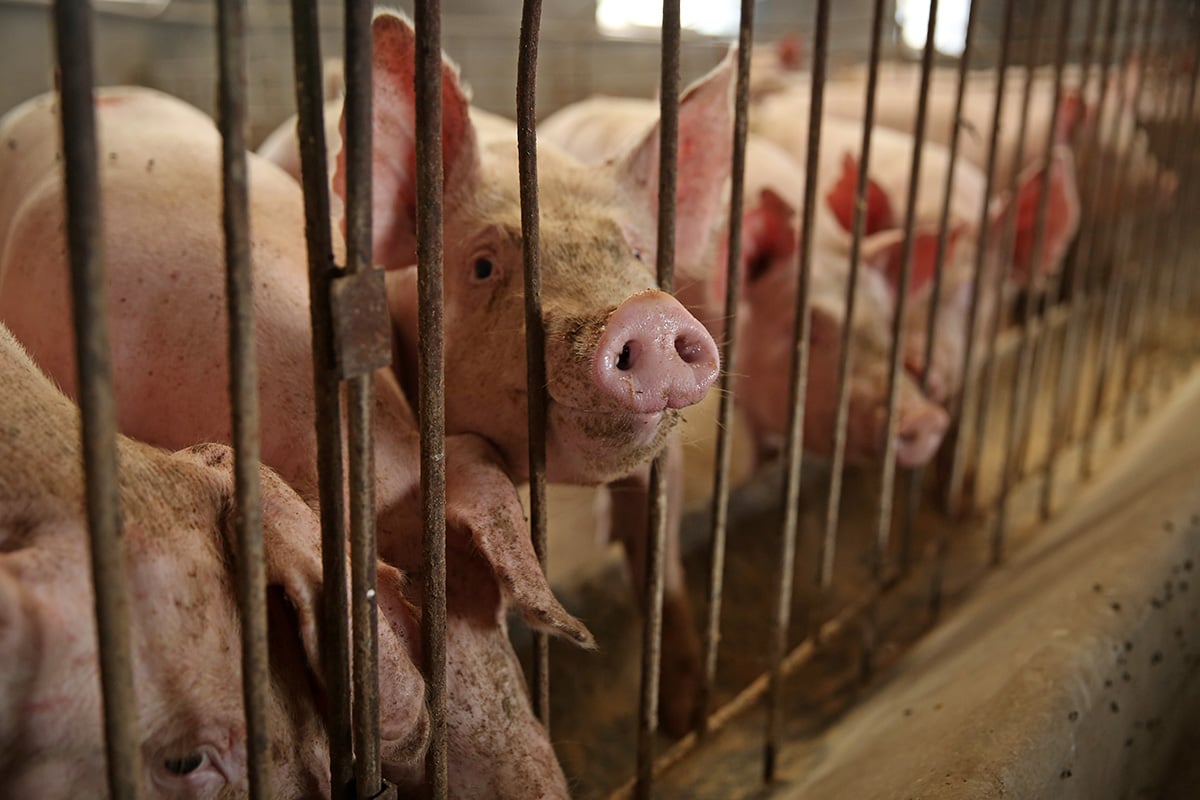
Big businesses are failing
Big factory farming businesses are doing their best to cover over their cracks with a rapid increase in the number of ‘carbon neutral’ commitments. This includes promising to reduce emissions intensity of business-as-usual practices via technological breakthroughs, like changing feed formulations for animals. But minor tweaks to reduce emissions won’t be enough while overall meat production continues to grow sharply.
There is no getting around the inherent carbon-intensive nature of factory farming, including its dependence on the global animal feed trade.
Greenwashing is rife
Businesses are also buying their way out of their obligations by calculating their climate impacts and paying to ‘offset’ the damage via schemes that remove carbon from the atmosphere, such as tree planting. This is nothing short of greenwashing, and the ultimate irony is that by locking land into crop production for feeding factory-farmed animals, there is little land left to reforest.
It’s clear that factory farming is winning while our climate and wildlife suffers. Farmed poultry now makes up 71% of all bird species by mass, whereas wild birds make up just 29% of total bird species by mass4.
Solutions to tackle climate change and animal cruelty
Research commissioned by World Animal Protection is the world’s first study to measure the potential climate and environmental benefits of eating less factory-farmed chicken and pork, while simultaneously ending the cruellest practices on factory farms and improving living conditions for the billions of animals currently trapped within them.
Our research revealed the three best ways to protect animals and fight climate change…
Eat less and better meat
Increases in overall meat consumption in the coming decades will exacerbate the climate impacts of factory farming.
Researchers measured the impact of diets containing less chicken and pork, as well as scenarios when people ‘eat less and better’, meaning they not only eat less chicken and pork, they also choose higher welfare meat when they do.
They find that a 50% reduction in consumption of both chicken and pork by 2040, along with a 50% adoption of higher welfare products would halve the annual climate impacts of chicken and pork production across these four hot spots. This would be equivalent to taking 45 million cars off the road for a year in the four hot spots combined.
End cruel factory farm practices
The research also finds that there is no significant difference between the climate impacts of conventional factory farming and higher welfare factory farming where pigs are no longer kept in cages, meat chickens have more room to move, animals are not mutilated, and higher welfare breeds of animals are used to ensure they grow at a rate that does not impose painful health problems on them.
This means there is no excuse for the industry to avoid ending the cruellest practices for animals that remain on factory farms.
Ban new factory farms
The best way to protect animals and tackle climate change is to end factory farming, starting with a ban on new factory farms. Substantial reductions in meat production and consumption will help to damage factory farming financially and unlock the humane and sustainable future we need.
Factory farming is not a precondition for food security – it undermines it. Although our research focuses on specific factory farming hot spots, the global message is clear - we need to rethink the current drive to build more factory farms in parts of the world where demand for meat is rising most sharply. More factory farms would take a heavy toll on our climate while condemning billions more animals to lives of suffering.
At #COP29, @WrldFed4Animals launched the #Animals4Climate Action tool, highlighting how biodiversity protection and animal welfare can cut emissions and enhance climate resilience.
— World Animal Protection (@MoveTheWorld) November 19, 2024
Policymakers now have guidance to include animals in climate plans. https://t.co/ioUaURZqpp
It’s time for action
If policymakers are to make good on their pledge to reduce the colossal climate footprint of food systems, climate talks needs to focus on factory farming and agriculture.
The biggest factory farming companies continue their stranglehold on our food system off the back of misguided government policies that confuse factory farming with food security.
But the big volumes of meat, delivered at cheap prices by factory farming, rest on a paradox. Food security is undermined as land is diverted to grow crops to feed animals rather than humans. In 50 years, soy production has grown at double the rate of human population increase. More than three-quarters (77%) of global soy is now fed to farmed animals, not used for human food. Local farmers are caught up in a profit-driven global trade in commodity crops for factory farms, meaning local communities go hungry.
Factory farming worsens climate change, and climate impacts are felt disproportionately by small farmers. Adverse weather causes their crops to fail or their livestock to succumb to disease. Wild animals suffer agonising deaths from droughts, floods and fires at greater frequency and severity. Animals are less resilient to disease and habitat destruction from animal feed expansion, increasing the risk of disease spillover from animals to humans. There is a strong risk that intensive agriculture could trigger the next pandemic.
What can governments do?
Little progress has been made to transform the global food system and a fundamental change is still needed for the sake of our climate and our planet. Governments should not be sticking their heads in the sand prior annually at COP.
They should:
- Publicly recognise that industrial animal agriculture is a major contributor to climate change and take steps to prevent deforestation linked to animal feed, meat and dairy production, including imports.
- Commit to reject plans for further factory farms and suspend the expansion of existing farms.
- Introduce and enforce minimum farmed animal welfare standards (FARMS), to end the worst forms of suffering on remaining factory farms.
- Ensure government regulations make factory farming redress its many harms – to climate, the environment and our health.
- Change subsidies and incentives so they support a predominantly plant-based food system, and toward equitable, humane and sustainable forms of food production, prioritising environmental health, animal welfare and social equity.
- Commit to halving animal meat production and consumption by 2040 if the country has a high per capita meat consumption.
- Tackle big farming monopolies, with support given to ensure access to affordable and nutritious protein for all, including those in low-income countries.
If we act to end factory farming now, we can make a positive change for our climate, protect precious habitats, support local communities and release billions of animals from a life of cruelty and pain.
How you can help
- Join our call on governments to stop approving new factory farms now;
- Eat less and better. By consuming fewer animal products and choosing higher welfare options, you can help to protect our climate, planet, and animal welfare.
Climate change news and blogs
-
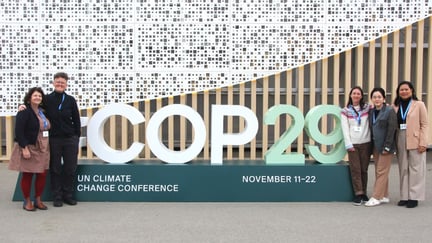
COP29 will be remembered as the 'great finance escape'
News
Read the roundup of COP29, where World Animal Protection advocated for animal welfare in the fight against climate...
-

Factory farming: the real climate culprit
Blog
Explore our reports on factory farming and discover why governments need to act to protect our climate, wildlife...
-

Rogan and Musk Say Meat Doesn’t Impact Climate. Science...
News
Is meat consumption irrelevant to climate change? Rogan and Musk think so, but science tells a different story....
-
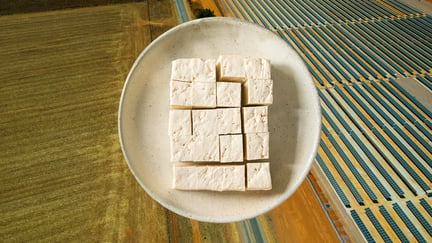
Tofu Protein Isn't the Problem
Blog
Debunking the misconception that soy foods and tofu protein are causing deforestation, when in reality 77% of soy...
